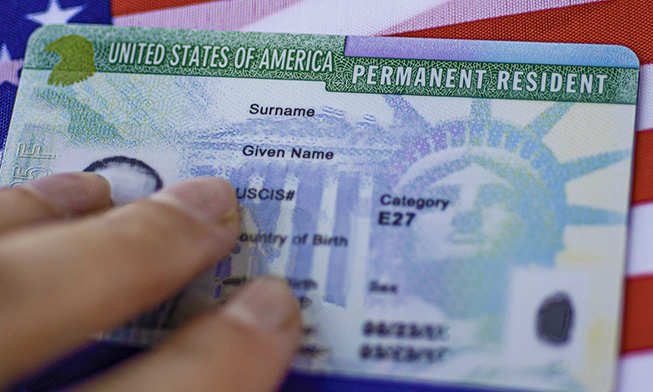The United States immigration law allows U.S. citizens and permanent residents to sponsor their “eligible relatives” who wish to migrate to the U.S. through the family-based green card process. To achieve this, the petitioner (a U.S. citizen or permanent resident) will need to submit Form I-130 to the United States Citizenship and Immigration Services (USCIS).
I-130 Petition: Step by Step Process
1. Determine the Eligibility Requirements
Before submitting Form I-130, you must understand the eligibility requirements both for the petitioner and beneficiary.
A petitioner is the U.S. citizen or permanent resident sponsoring the application, while the beneficiary is the foreign relative who is being sponsored to migrate to the U.S.
So, as a petitioner, you must have proof of citizenship or permanent residency to be eligible to file Form I-130. The beneficiary must also have evidence of a “qualifying family relationship.” This is because not all family members can qualify for family-based green card sponsorship.
As the petitioner, while you may sponsor other family members, your immediate relatives (spouse and unmarried children under 21 years old) top the list of the most qualified relatives for this visa. There are also some differences between those a U.S. citizen can sponsor and those a permanent resident can sponsor. This USCIS “Green Card Eligibility Categories” webpage contains the complete list of who a U.S. citizen can sponsor and who a permanent resident can sponsor.
2. Gather the Supporting Documents
The following are the supporting documents you will need to provide when submitting your Form I-130.
Evidence of U.S. citizenship or lawful permanent residence (as applicable):
- A copy of your birth certificate
- A copy of citizenship or naturalization certificate
- A copy of a valid, unexpired U.S. passport;
- An original statement from a United States consular officer confirming you are a citizen with a valid U.S. passport;
- A copy of the front and back of your Green Card
Evidence of family relationship with the beneficiary using one of the following:
- Spouse: A copy of your marriage certificate
- Child: A copy of your child’s birth certificate(s).
- Parent: A copy of your own birth certificate.
- Brother/Sister: A copy of your own birth certificate and a copy of your sibling’s birth certificate.
Evidence of the bona fide marriage, if the beneficiary is your spouse:
- Documentation showing you both have joint ownership of the property;
- Proof to demonstrate you both live at the same address together, such as leasing showing joint tenancy of a shared residence
- Documentation showing that you both have combined finances;
- Birth certificates of the child(ren) born to you and your spouse together;
- Affidavits are sworn to by third parties that have personal knowledge of the marital relationship’s bona fides.
- Any other relevant documentation to demonstrate that there is an ongoing marital union.
- Proof of legal name change (if applicable)
- Two passport-style photographs (if applicable).
3. Complete the Form
Once you have confirmed that both you and the beneficiary meet the eligibility criteria and have all the supporting documents applicable in your own case, you can then proceed to complete the form. You can file the petition online via the USCIS Form I-130 webpage. The form has about nine different sections, where you will need to input certain information about yourself and the beneficiary. Ensure you follow all the guidelines in completing the form.
4. Receive a Decision
The processing times for Form I-130 may vary depending on certain factors, such as the particular USCIS center in charge of the case and whether the form was filed with all the required documents. In general, however, the average processing time is 7 – 15 months. It could be longer in some cases, especially if you receive a Request for Additional Evidence (RFE) during the process. However, once the petition is processed and a decision is made, you will receive a notification telling you whether the petition is approved or denied.
NOTE: Form I-130 is just one step in the family-based green card application process. After the petition has been approved, other actions can now follow or, in some instances, be included with the underlying petition. This will consist of filing of I-485, Adjustment of Status, and an I-864 Affidavit of Support. There may be complications depending on unique individual circumstances. Whether you are in the U.S. or outside of the U.S. intending to file with consular processing to receive an immigrant visa, it is advisable to consult with an experienced immigration attorney to confirm eligibility and that all requirements are adequately satisfied.







